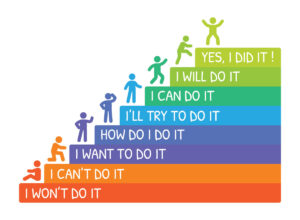Empowering students to identify and harness their unique assets opens the gateway to foster student self efficacy and agency. When it comes to student goal setting, it’s essential to approach the process from a stance that acknowledges and celebrates students’ strengths. Using an asset-based lens means focusing on what students can do rather than what they can’t.
Amplifying Student Assets
Asset-based goal setting is all about leveraging a scholar’s unique capabilities, lived experiences, and strengths as a valued source of knowledge to build upon. Here are five tips to keep in mind when setting goals with students using this approach.
1. Recognize and Celebrate Individual Strengths
Every student brings a unique set of abilities, experiences, and knowledge to the table. It’s important to recognize these strengths and integrate them into the goal-setting process. By celebrating and leveraging these assets, students can feel empowered and more motivated to achieve their ambitious goals.
Collective Action: Begin each goal-setting session by asking students to list three things they’re proud of or highlight a new found strength. Use these as building blocks for setting their social, emotional and academic goals.
2. Co-Construct Goals with the Student
Rather than dictating what a student’s goals should be, collaborate with them. Engage in a partnership where both parties contribute to the goal-setting process. This collaboration fosters a sense of ownership and increases the likelihood of commitment and success. Make sure the goals are meaningful for your students and they understand “what is in it for me”.
Collective Action: Use open-ended questions to guide students in defining their aspirations, such as “Where do you see yourself excelling this year?” or “What strengths would you like to further develop?”
3. Embed Cultural and Personal Relevance
To ensure goals resonate deeply with students, they must be tied to their personal and cultural backgrounds. Recognizing the richness of students’ diverse experiences can be a potent motivational tool.
Collective Action: Encourage students to set goals that align with their cultural values, traditions, or personal interests. For instance, a student passionate about music might aim to incorporate music into a project or presentation that supports their goals personally.
4. Foster a Growth Mindset
Approaching challenges with a growth mindset means viewing them as opportunities to learn and grow. When students believe they can develop their abilities and learn from setbacks, they’re more likely to persevere in achieving their goals.
Collective Action: Using screener data and other sources of feedback, frame goal setting in terms of potential growth. Ask students, “What’s a challenge you can turn into an opportunity this year?” or “How can we use your strengths to overcome this challenge?” or “How can we transform this challenge into an opportunity?”
5. Continuously Reflect and Adjust
Goal setting isn’t a one-time activity. It’s essential to revisit goals, reflect on progress, and make midcourse adjustments. This iterative process ensures that goals remain relevant and attainable, given learners’ evolving needs.
Collective Action: Establish goal setting routines and make sure that each student has an accountability partner. Schedule regular check-ins with students to discuss their progress. Creating time and space for partners to hold each other accountable. Celebrate the mastery moments achieved and collaboratively refine goals as needed.
Moving From Deficit to Possibilities
Utilizing an asset-based lens when setting goals with students shifts the focus from deficits to possibilities. By creating goals collaboratively, fostering a growth mindset, and engaging students in continuous reflection and dialogue, educators can inspire learners to reach their full potential. This approach not only sets the stage for learning success but also nurtures resilient, confident, self-empowered learners. We can all learn from Michelle Obama’s inspirational, wise words, “Always stay true to yourself, and never let what somebody says distract you from your goals.”

Want to learn more about goal setting?
Check out this article on Elevating PLC’s with Impact Team CLEAR Goals!
Meet the Author!
Dr. Paul Bloomberg is the best-selling co-author of Leading Impact Teams: Building a Culture of Efficacy. Read a complimentary chapter of Leading Impact Teams 2.0, that will be released in October 2023.
Download FREE Chapter!
